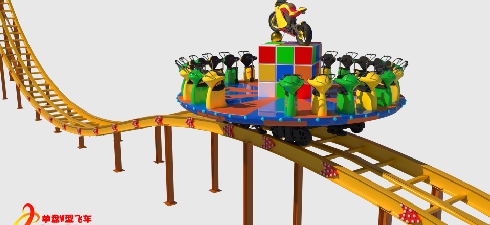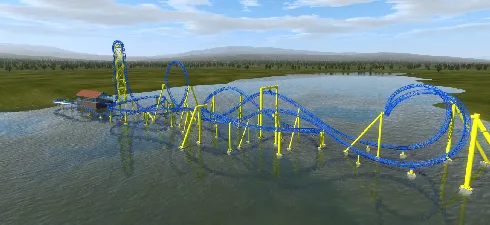a ferris wheel
The iconic Ferris wheel, a symbol of amusement and wonder, has fascinated spectators since George Washington Gale Ferris Jr. introduced it to the world in 1893. Yet, beyond the enchanting view it offers from above, lies a captivating topic for discussion—the cost associated with constructing and maintaining such a grand attraction. This article delves into an exploration of Ferris wheel pricing, offering insights into the true investment of these monumental structures.

In recent years, the Ferris wheel market has seen a transformative evolution, marked by technological advancements and a burgeoning desire from entertainment parks to outdo each other. Investing in a Ferris wheel is akin to any major infrastructure project, requiring a blend of engineering expertise and financial foresight. Generally, the cost for a standard, mid-size Ferris wheel can range from $300,000 to $750,000. However, when one ventures into crafting a colossal spectacle, akin to the London Eye or the Singapore Flyer, the figures exponentially increase, reaching tens of millions of dollars.
Why the disparity in cost? The pricing of a Ferris wheel is a complex matrix influenced by several factors. The first determinant is size. Larger wheels, which can stand 550 feet tall or more, naturally involve higher costs due to the extensive amount of materials required. Not only is there a need for robust steel frameworks, but these giant wheels also necessitate intricate architectural designs to ensure safety and stability.

Another vital aspect is the location. Constructing a Ferris wheel in a densely populated urban area or a tourist hotspot offers heightened accessibility and potential for high returns. However, this also means grappling with strict zoning laws, elevated land prices, and possibly intricate logistical challenges, which can all augment the initial outlay.
Materials and technology also play a crucial role. The choice of advanced materials for durability against environmental elements, coupled with high-tech features like lighting systems, climate-controlled cabins, and entertainment amenities, significantly add to the overall cost. Today’s Ferris wheels also incorporate cutting-edge technology, such as digital ticketing and queue management systems, ensuring a seamless experience for riders.
ferris wheel price
The supplier’s experience and reputation cannot be overstated. Established firms with a portfolio of successful installations might charge premium rates but bring invaluable expertise that guarantees project success. Their history in navigating potential pitfalls and executing complex designs aligns with the core investment strategy—balancing cost with quality and assurance.
Beyond construction, the operation and maintenance of Ferris wheels also contribute to long-term expenses. Routine checks, compliance with safety regulations, and maintenance of mechanical components require consistent investment. Furthermore, a Ferris wheel occupies a significant footprint and necessitates ongoing operational costs, including staffing, insurance, and marketing.
ROI (Return on Investment) is an integral aspect, often influencing potential buyers or companies when deciding to embark on such a venture. Ferris wheels positioned in thriving tourist destinations often boast high visibility and attract substantial foot traffic, thus promising robust return rates. These structures are not just amusement rides; they serve as iconic landmarks that become synonymous with the cityscapes they inhabit, creating perpetual value.
As the global appetite for unique, Instagram-worthy experiences grows, so does the competition among entertainment venues to host the next big draw. Investing in a Ferris wheel thus represents not only a financial commitment but a significant strategic decision in today's experience-driven economy.
In conclusion, the price of a Ferris wheel is a reflection of its scale, complexity, and associated prestige. For those considering such an investment, understanding these nuances is imperative. Whether seen from an entrepreneurial lens or one of urban development, Ferris wheels offer much more than just an elevated view—they hold the promise of enduring allure and the potential for substantial economic impact.
-
Top Amusement Equipment Manufacturer Rock n Roller Coaster & Carousel ManufacturerJun.10,2025
-
World's Scariest Roller Coaster Experience Ultimate Thrill & HeightJun.10,2025
-
Ultimate Thrill Ride Roller Coaster High-Speed, Safe AdventureMay.30,2025
-
Carousel Mansfield Rides Premium Indoor & Event SolutionsMay.30,2025
-
T3 Roller Coaster High-Thrill, Safe Ride for Theme Parks & ResortsMay.30,2025
-
Roller Coaster Cart Design Custom-Built & High-Safety Thrill Ride VehiclesMay.30,2025
